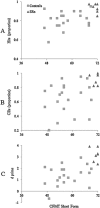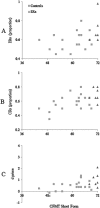Super-recognisers in Action: Evidence from Face-matching and Face Memory Tasks
- PMID: 30122803
- PMCID: PMC6084338
- DOI: 10.1002/acp.3170
Super-recognisers in Action: Evidence from Face-matching and Face Memory Tasks
Abstract
Individuals employed in forensic or security settings are often required to compare faces of ID holders to document photographs, or to recognise the faces of suspects in closed-circuit television footage. It has long been established that both tasks produce a high error rate amongst typical perceivers. This study sought to determine the performance of individuals with exceptionally good face memory ('super-recognisers') on applied facial identity matching and memory tasks. In experiment 1, super-recognisers were significantly better than controls when matching target faces to simultaneously presented line-ups. In experiment 2, super-recognisers were also better at recognising faces from video footage. These findings suggest that super-recognisers are more accurate at face matching and face memory tasks than typical perceivers, and they could be valuable expert employees in national security and forensic settings.
© 2015 The Authors Applied Cognitive Psychology Published by John Wiley & Sons Ltd.
Figures




References
-
- BBC News (2014). Thousands attend Notting Hill Carnival in west London. Retrieved 08/26, 2014, from http://www.bbc.co.uk/news/uk-england-london-28917765.
-
- Bindemann, M. , Brown, C. , Koyas, T. , & Russ, A. (2012). Individual differences in face identification postdict eyewitness accuracy. Journal of Applied Research in Memory and Cognition, 1(2), 96–103. DOI:10.1016/j.jarmac.2012.02.001. - DOI
-
- Bowles, D. C. , McKone, E. , Dawel, A. , Duchaine, B. , Palermo, R. , Schmalzl, L. , … & Yovel, G. (2009). Diagnosing prosopagnosia: Effects of ageing, sex, and participant–stimulus ethnic match on the Cambridge Face Memory Test and Cambridge Face Perception Test. Cognitive Neuropsychology, 26(5), 423–455. DOI:10.1080/02643290903343149 - DOI - PubMed
-
- Bobak, A. K. , Bennetts, R. J. , Parris, B. , Jansari, A. , & Bate, S. (in preparation). Verification of face identities from images captured on video
LinkOut - more resources
Full Text Sources
Other Literature Sources
